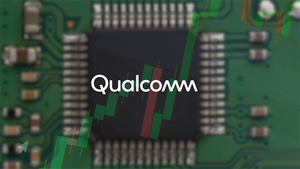
Machine vision technology company Cognex (NASDAQ: CGNX) reported revenue ahead of Wall Street’s expectations in Q2 CY2025, with sales up 4.1% year on year to $249.1 million. Guidance for next quarter’s revenue was optimistic at $255 million at the midpoint, 2.1% above analysts’ estimates. Its non-GAAP profit of $0.25 per share was 5.8% above analysts’ consensus estimates.
Is now the time to buy Cognex? Find out by accessing our full research report, it’s free.
Cognex (CGNX) Q2 CY2025 Highlights:
- Revenue: $249.1 million vs analyst estimates of $246 million (4.1% year-on-year growth, 1.3% beat)
- Adjusted EPS: $0.25 vs analyst estimates of $0.24 (5.8% beat)
- Adjusted EBITDA: $51.68 million vs analyst estimates of $48.75 million (20.7% margin, 6% beat)
- Revenue Guidance for Q3 CY2025 is $255 million at the midpoint, above analyst estimates of $249.7 million
- Adjusted EPS guidance for the full year is $0.27 at the midpoint, missing analyst estimates by 69%
- Operating Margin: 17.4%, up from 16.1% in the same quarter last year
- Free Cash Flow Margin: 16.2%, up from 9.7% in the same quarter last year
- Market Capitalization: $5.75 billion
Company Overview
Founded in 1981 when computer vision was in its infancy, Cognex (NASDAQ: CGNX) develops machine vision systems and software that help manufacturers and logistics companies automate quality inspection and tracking of products.
Revenue Growth
Examining a company’s long-term performance can provide clues about its quality. Any business can put up a good quarter or two, but the best consistently grow over the long haul.
With $929.6 million in revenue over the past 12 months, Cognex is a small player in the business services space, which sometimes brings disadvantages compared to larger competitors benefiting from economies of scale and numerous distribution channels. On the bright side, it can grow faster because it has more room to expand.
As you can see below, Cognex grew its sales at a decent 6.2% compounded annual growth rate over the last five years. This shows its offerings generated slightly more demand than the average business services company, a useful starting point for our analysis.
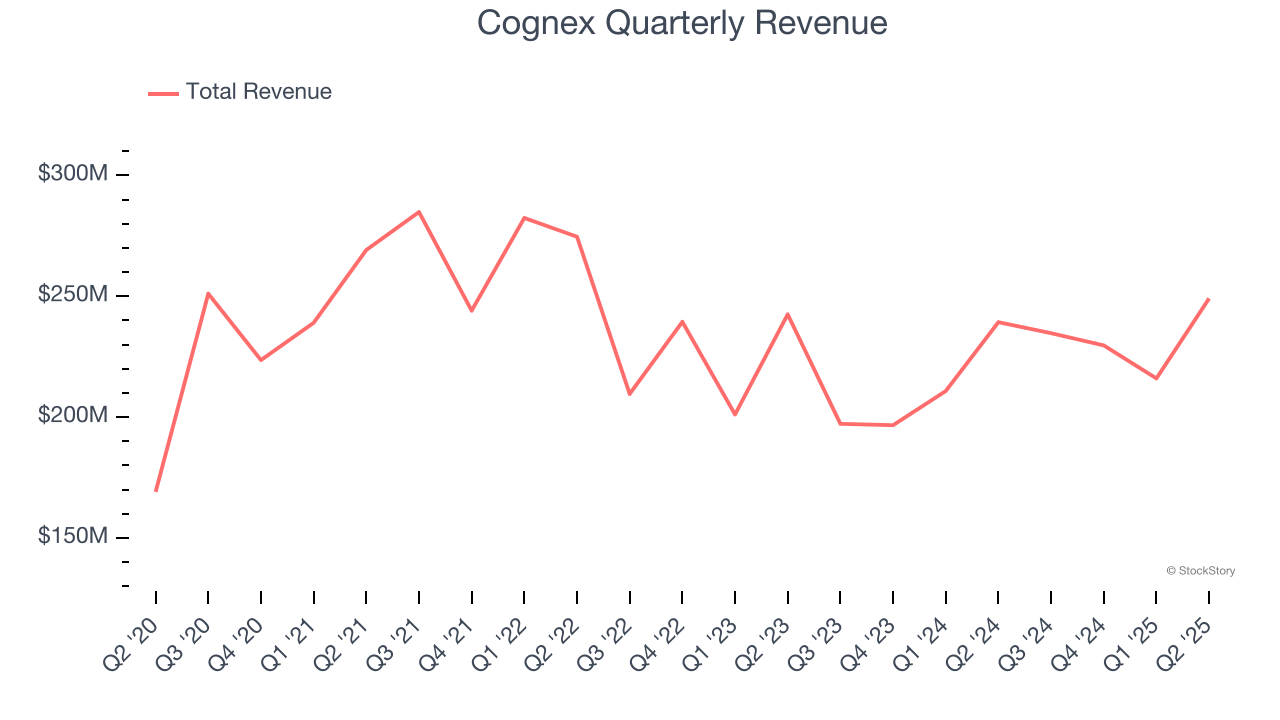
We at StockStory place the most emphasis on long-term growth, but within business services, a half-decade historical view may miss recent innovations or disruptive industry trends. Cognex’s recent performance shows its demand has slowed as its annualized revenue growth of 2% over the last two years was below its five-year trend. 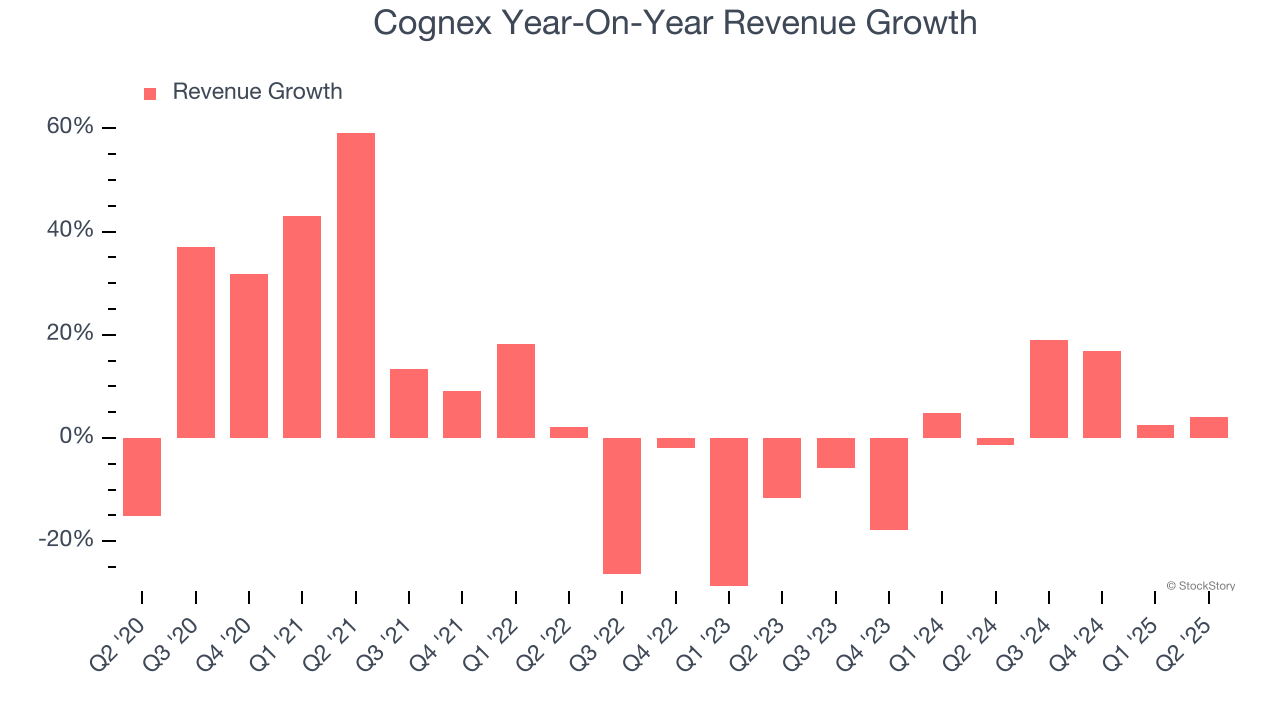
This quarter, Cognex reported modest year-on-year revenue growth of 4.1% but beat Wall Street’s estimates by 1.3%. Company management is currently guiding for a 8.6% year-on-year increase in sales next quarter.
Looking further ahead, sell-side analysts expect revenue to grow 8.2% over the next 12 months, an improvement versus the last two years. This projection is commendable and implies its newer products and services will catalyze better top-line performance.
Today’s young investors won’t have read the timeless lessons in Gorilla Game: Picking Winners In High Technology because it was written more than 20 years ago when Microsoft and Apple were first establishing their supremacy. But if we apply the same principles, then enterprise software stocks leveraging their own generative AI capabilities may well be the Gorillas of the future. So, in that spirit, we are excited to present our Special Free Report on a profitable, fast-growing enterprise software stock that is already riding the automation wave and looking to catch the generative AI next.
Operating Margin
Cognex has been a well-oiled machine over the last five years. It demonstrated elite profitability for a business services business, boasting an average operating margin of 21.8%.
Analyzing the trend in its profitability, Cognex’s operating margin decreased by 19.1 percentage points over the last five years. This raises questions about the company’s expense base because its revenue growth should have given it leverage on its fixed costs, resulting in better economies of scale and profitability.
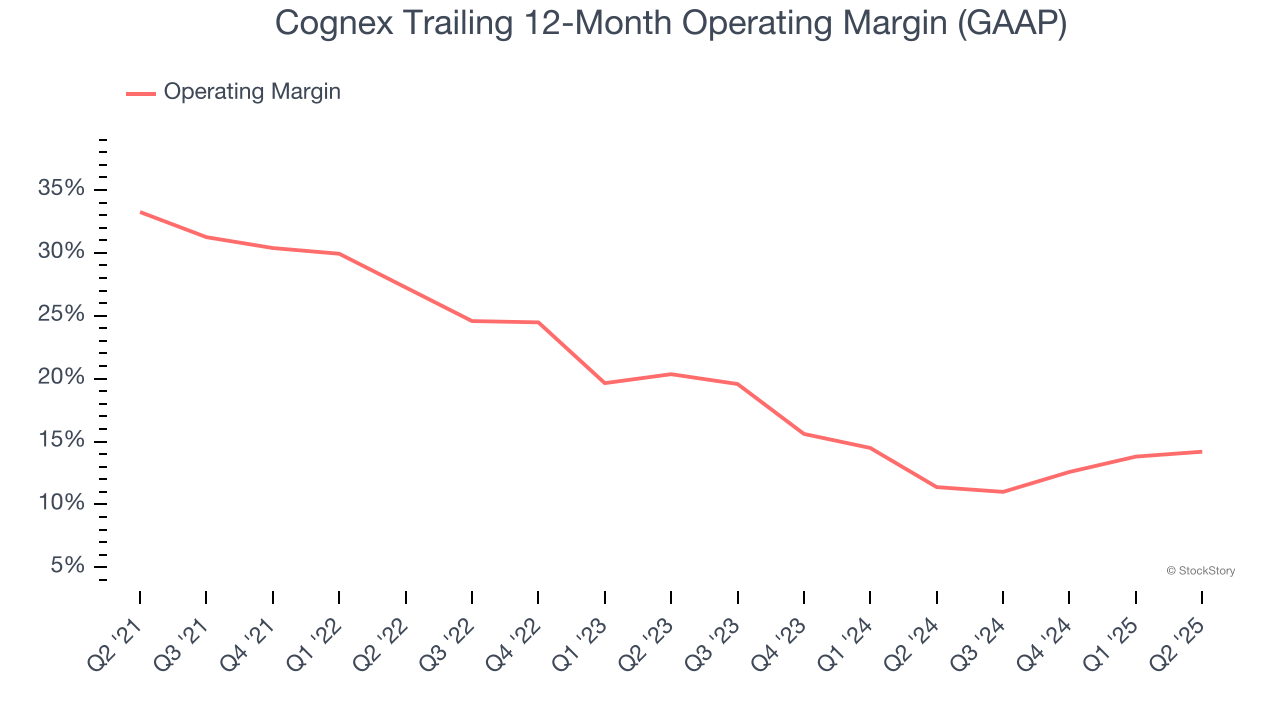
This quarter, Cognex generated an operating margin profit margin of 17.4%, up 1.4 percentage points year on year. This increase was a welcome development and shows it was more efficient.
Earnings Per Share
Revenue trends explain a company’s historical growth, but the long-term change in earnings per share (EPS) points to the profitability of that growth – for example, a company could inflate its sales through excessive spending on advertising and promotions.
Cognex’s unimpressive 4.8% annual EPS growth over the last five years aligns with its revenue performance. On the bright side, this tells us its incremental sales were profitable.
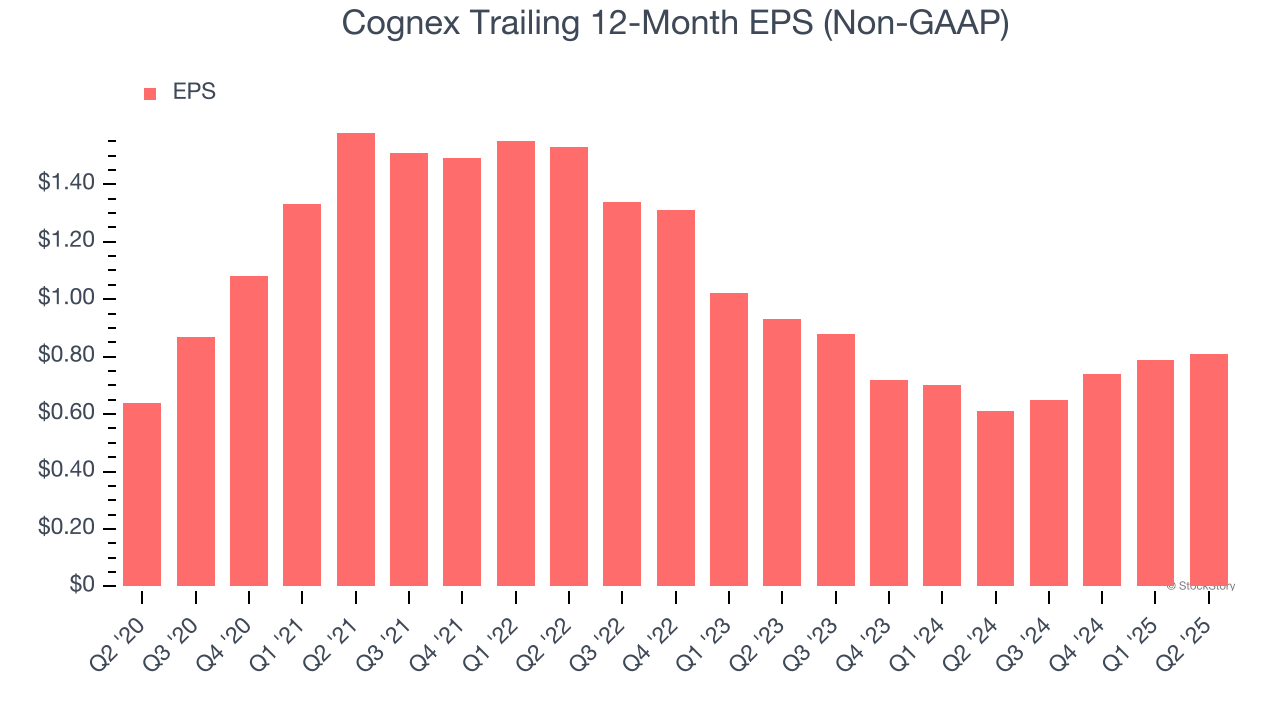
Like with revenue, we analyze EPS over a more recent period because it can provide insight into an emerging theme or development for the business.
Cognex’s two-year annual EPS declines of 6.7% were bad and lower than its 2% two-year revenue growth.
Diving into the nuances of Cognex’s earnings can give us a better understanding of its performance. While we mentioned earlier that Cognex’s operating margin expanded this quarter, a two-year view shows its margin has declined by 9.4 percentage points. This was the most relevant factor (aside from the revenue impact) behind its lower earnings; interest expenses and taxes can also affect EPS but don’t tell us as much about a company’s fundamentals.
In Q2, Cognex reported adjusted EPS at $0.25, up from $0.23 in the same quarter last year. This print beat analysts’ estimates by 5.8%. Over the next 12 months, Wall Street expects Cognex’s full-year EPS of $0.81 to grow 20.8%.
Key Takeaways from Cognex’s Q2 Results
It was great to see Cognex’s revenue guidance for next quarter top analysts’ expectations. We were also happy this quarter's revenue, EPS, and EBITDA outperformed Wall Street’s estimates. On the other hand, its full-year EPS guidance missed. Overall, this print had some key positives. The stock traded up 9.6% to $37 immediately after reporting.
So do we think Cognex is an attractive buy at the current price? The latest quarter does matter, but not nearly as much as longer-term fundamentals and valuation, when deciding if the stock is a buy. We cover that in our actionable full research report which you can read here, it’s free.


